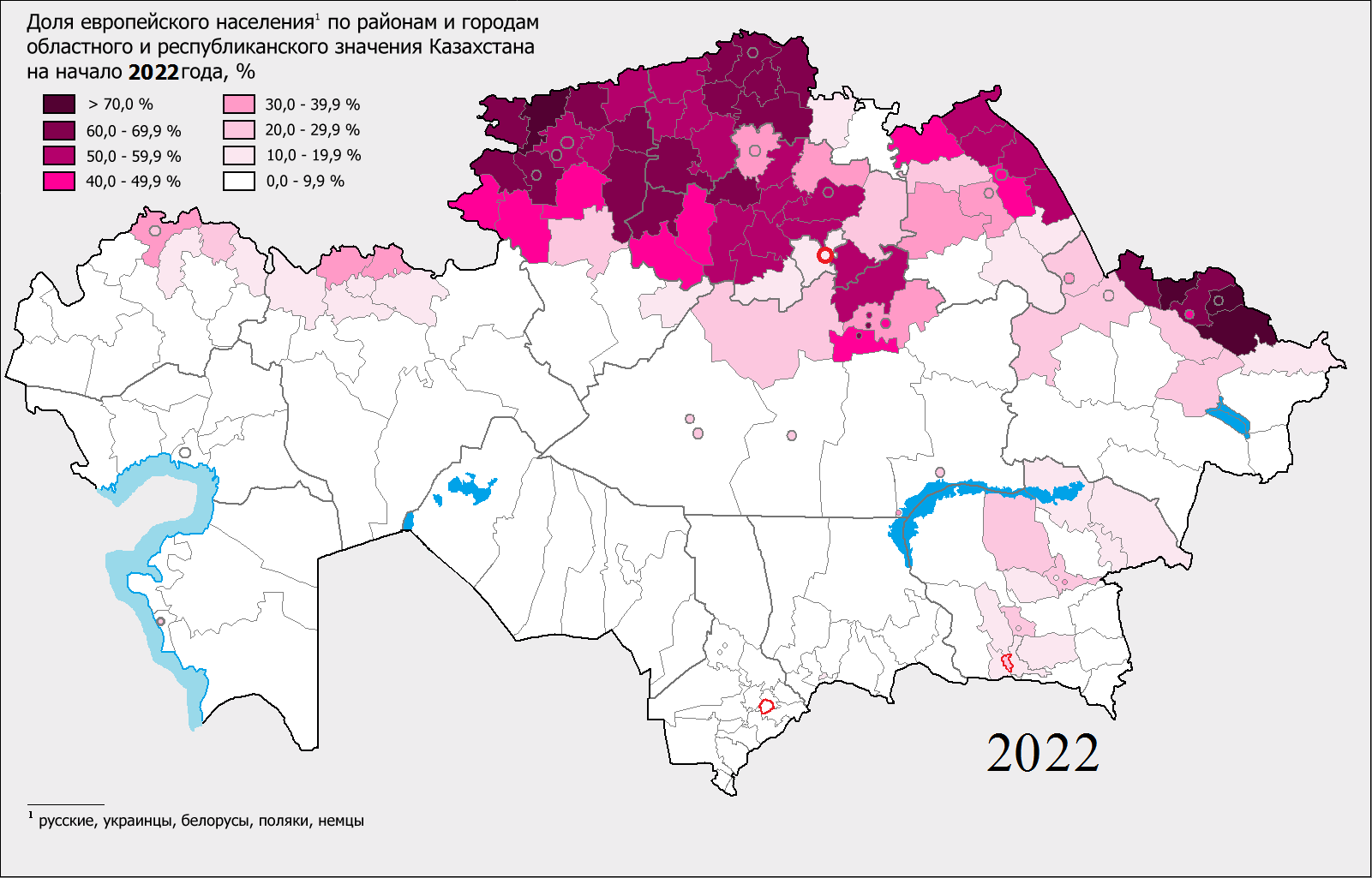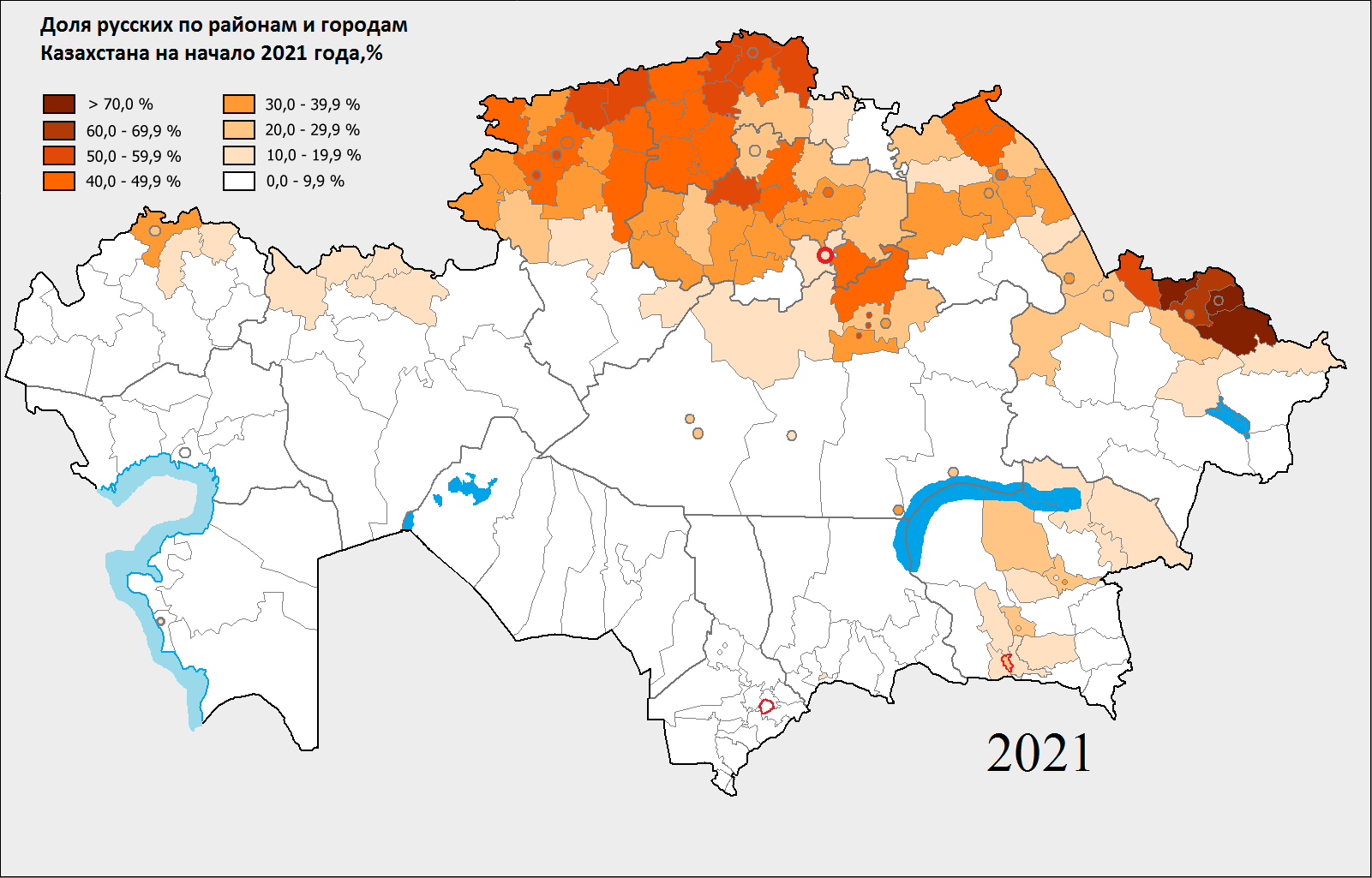|
Pavlodar
Pavlodar ( ; ) is a city in northeastern Kazakhstan and the capital of Pavlodar Region. It is located 450 km northeast of the national capital Astana and 405 km southeast of the Russian city of Omsk along the Irtysh River. , the city had a population of 331,710. The population of Pavlodar is composed predominantly of ethnic Kazakhs and Russians, with significant Ukrainian, German and Tatar minorities. The city is served by Pavlodar Airport. History One of the oldest cities in northern Kazakhstan, Pavlodar was founded in the IX century as Imakia, the capital city of Kimak Khaganate. Koryakovsky fort was founded in 1720 as an Imperial Russian outpost. The settlement was created to establish control over the region's salt lakes, an important source of valuable salt. In 1861 the settlement was renamed Pavlodar and incorporated as a town. Pavlodar's significance was due in large measure to the substantial agricultural and salt-producing industries that had developed the ... [...More Info...] [...Related Items...] OR: [Wikipedia] [Google] [Baidu] |
Pavlodar Region
Pavlodar Region ( kk, Павлодар облысы, translit=Pavlodar oblysy; russian: Павлодарская область, translit=Pavlodarskaya oblast) is a region of Kazakhstan. The population of the region was and ; the latest official estimate (as at the start of 2018) was 754,739. Its capital is the city of Pavlodar, which had a population of 360,014 at the start of 2018. Many people, especially Ukrainians, migrated to Pavlodar in Nikita Khrushchev's Virgin Lands Campaign. The Bayanaul National Park, a protected area of the Kazakh Uplands, is located in the Bayanaul Range, within 100 km of Ekibastuz. Geography Pavlodar borders Russia (Altai Krai, Omsk Oblast and Novosibirsk Oblast) to the north, and also borders the following Kazakh regions: Akmola (to the west), East Kazakhstan (to the south-east), North Kazakhstan (to the north-west), and Karaganda (to the south). The Irtysh River flows from the Altay Mountains in China to Russia through the region; t ... [...More Info...] [...Related Items...] OR: [Wikipedia] [Google] [Baidu] |
Pavlodar Airport
Pavlodar International Airport ( kk, Pavlodar Halyqaralyq Äuejaiy), also colloquially known as Pavlodar South , is an airport in Kazakhstan located southeast of Pavlodar. It services medium-sized airliners. History Until 1999, The airport was part of Irtysh Avia airline. Since 2000, it was under control of Pavlodar oblast akimat, and in 2006, it was transferred to Samruk-Kazyna holding. The airport was renovated and was awarded an ICAO category I certificate in 2006. Airlines and destinations See also *Transport in Kazakhstan *List of the busiest airports in the former USSR A ''list'' is any set of items in a row. List or lists may also refer to: People * List (surname) Organizations * List College, an undergraduate division of the Jewish Theological Seminary of America * SC Germania List, German rugby unio ... References Airports built in the Soviet Union Airports in Kazakhstan {{Kazakhstan-transport-stub ... [...More Info...] [...Related Items...] OR: [Wikipedia] [Google] [Baidu] |
Kazakhstan
Kazakhstan, officially the Republic of Kazakhstan, is a transcontinental country located mainly in Central Asia and partly in Eastern Europe. It borders Russia to the north and west, China to the east, Kyrgyzstan to the southeast, Uzbekistan to the south, and Turkmenistan to the southwest, with a coastline along the Caspian Sea. Its capital is Astana, known as Nur-Sultan from 2019 to 2022. Almaty, Kazakhstan's largest city, was the country's capital until 1997. Kazakhstan is the world's largest landlocked country, the largest and northernmost Muslim-majority country by land area, and the ninth-largest country in the world. It has a population of 19 million people, and one of the lowest population densities in the world, at fewer than 6 people per square kilometre (15 people per square mile). The country dominates Central Asia economically and politically, generating 60 percent of the region's GDP, primarily through its oil and gas industry; it also has vast minera ... [...More Info...] [...Related Items...] OR: [Wikipedia] [Google] [Baidu] |
Regions Of Kazakhstan
Kazakhstan is divided into 17 regions ( kk, облыстар/''oblystar''; singular: облыс/''oblys''; russian: области/''oblasti''; singular: область/''oblast). The regions are further subdivided into districts ( kk, аудандар/''audandar''; singular: аудан/''audan''; russian: районы/; singular: russian: район/). Three cities, Shymkent, the largest city Almaty, and the capital Astana) are not part of the regions they are surrounded by. On 16 March 2022, Kazakh President Kassym-Jomart Tokayev announced that three new regions would be created. Abai Region was created from East Kazakhstan Region with its capital in Semey. Ulytau Region was created from Karaganda Region with its capital in Jezkazgan. Jetisu Region was created from Almaty Region with its capital in Taldykorgan; Almaty Region's capital was moved from Taldykorgan to Qonaev. __TOC__ Regions Demographic statistics In 2022, three new regions were created - Abai (from part ... [...More Info...] [...Related Items...] OR: [Wikipedia] [Google] [Baidu] |
COVID-19 Pandemic In Kazakhstan
The COVID-19 pandemic in Kazakhstan is part of the COVID-19 pandemic, worldwide pandemic of COVID-19, coronavirus disease 2019 () caused by severe acute respiratory syndrome coronavirus 2 (). The virus was confirmed to have reached Kazakhstan on 13 March 2020 after two Kazakh citizens in Almaty returned from Germany. That same day, two more cases were confirmed, with one female arriving from Italy in Nur-Sultan and the other from Germany in Almaty as well. Following the outbreak, on 15 March 2020, President Kassym-Jomart Tokayev declared a state of emergency that was set to last until 15 April 2020. However, measures were prolonged in order to curb the transmission of the virus, leading to many notable holidays such as Nowruz and the Victory Day (9 May), Victory Day being cancelled. On 19 March 2020, a strict quarantine was placed on the cities of Nur-Sultan and Almaty, where the most cases were occurring. On 30 March 2020, Atyrau and five cities in Karaganda Region went unde ... [...More Info...] [...Related Items...] OR: [Wikipedia] [Google] [Baidu] |
Irtysh River
The Irtysh ( otk, 𐰼𐱅𐰾:𐰇𐰏𐰕𐰏, Ertis ügüzüg, mn, Эрчис мөрөн, ''Erchis mörön'', "erchleh", "twirl"; russian: Иртыш; kk, Ертіс, Ertis, ; Chinese: 额尔齐斯河, pinyin: ''É'ěrqísī hé'', Xiao'erjing: عَعَرٿِسِ حْ; ug, إيرتيش, Әртиш, ''Ertish''; tt-Cyrl, Иртеш, , , Siberian Tatar: Эйәртеш, ''Eya’rtes’'') is a river in Russia, China, and Kazakhstan. It is the chief tributary of the Ob and is also the second longest tributary river in the world after Paraná River. The river's source lies in the Mongolian Altai in Dzungaria (the northern part of Xinjiang, China) close to the border with Mongolia. The Irtysh's main tributaries include the Tobol, Demyanka and the Ishim. The Ob-Irtysh system forms a major drainage basin in Asia, encompassing most of Western Siberia and the Altai Mountains. Geography From its origins as the ''Kara-Irtysh'' (Vast Irtysh, kara means Vast in Turkic lang ... [...More Info...] [...Related Items...] OR: [Wikipedia] [Google] [Baidu] |
Russians In Kazakhstan
There has been a substantial population of Russians in Kazakhstan since the 19th century. Although their numbers have been reduced since the breakup of the Soviet Union, they remain prominent in Kazakh society today. Russians formed a plurality of the Kazakh SSR's population for several decades. Early colonisation The first Rus' traders and soldiers began to appear on the northwestern edge of modern Kazakhstan territory in the early 16th century, when Cossacks established the forts that later became the cities of Oral (Ural'sk, est. 1520) and Atyrau (Gur'yev). Ural, Siberian and later Orenburg Cossack Hosts gradually established themselves in parts of northern Kazakhstan. In 1710s and 1720s Siberian Cossacks founded Oskemen (Ust-Kamennaya), Semey (Semipalatinsk) and Pavlodar (Fort Koryakovskiy) as border forts and trading posts. Russian imperial authorities followed and were able to seize Kazakh territory because the local khanates were preoccupied by a war with Kalmyks (Oi ... [...More Info...] [...Related Items...] OR: [Wikipedia] [Google] [Baidu] |
Omsk
Omsk (; rus, Омск, p=omsk) is the administrative center and largest city of Omsk Oblast, Russia. It is situated in southwestern Siberia, and has a population of over 1.1 million. Omsk is the third largest city in Siberia after Novosibirsk and Krasnoyarsk, and the twelfth-largest city in Russia. It is an essential transport node, serving as a train station for the Trans-Siberian Railway and as a staging post for the Irtysh River. During the Imperial era, Omsk was the seat of the Governor General of Western Siberia and, later, of the Governor General of the Steppes. For a brief period during the Russian Civil War in 1918–1920, it served as the capital of the anti-Bolshevik Russian State and held the imperial gold reserves. Omsk serves as the episcopal see of the bishop of Omsk and Tara, as well as the administrative seat of the Imam of Siberia. The mayor is Sergey Shelest. Etymology The city of Omsk is named after the Om river. This hydronym in the dialect of Baraba ... [...More Info...] [...Related Items...] OR: [Wikipedia] [Google] [Baidu] |
Kazakh Soviet Socialist Republic
; kk, Қазақ Советтік Социалистік Республикасы) *1991: Republic of Kazakhstan (russian: Республика Казахстан; kk, Қазақстан Республикасы) , linking_name = the Kazakh Soviet Socialist Republic , year_start = 1936 , event_start = Elevation to a Union Republic , date_start = 5 December , event1 = Jeltoqsan riots , date_event1 = 16 December 1986 , event2 = Sovereignty declared , date_event2 = 25 October 1990 , event3 = Renamed Republic of Kazakhstan , date_event3 = 10 December 1991 , event4 = Independence declared , date_event4 = 16 December 1991 , date_end = 26 December , event_end = Independence recognised , year_end = 1991 , p1 = Kazakh ASSR , s1 = Kazakhstan ... [...More Info...] [...Related Items...] OR: [Wikipedia] [Google] [Baidu] |
Humid Continental Climate
A humid continental climate is a climatic region defined by Russo-German climatologist Wladimir Köppen in 1900, typified by four distinct seasons and large seasonal temperature differences, with warm to hot (and often humid) summers and freezing cold (sometimes severely cold in the northern areas) winters. Precipitation is usually distributed throughout the year but often do have dry seasons. The definition of this climate regarding temperature is as follows: the mean temperature of the coldest month must be below or depending on the isotherm, and there must be at least four months whose mean temperatures are at or above . In addition, the location in question must not be semi-arid or arid. The cooler ''Dfb'', ''Dwb'', and ''Dsb'' subtypes are also known as hemiboreal climates. Humid continental climates are generally found between latitudes 30° N and 60° N, within the central and northeastern portions of North America, Europe, and Asia. They are rare and is ... [...More Info...] [...Related Items...] OR: [Wikipedia] [Google] [Baidu] |
Ukrainians
Ukrainians ( uk, Українці, Ukraintsi, ) are an East Slavic ethnic group native to Ukraine. They are the seventh-largest nation in Europe. The native language of the Ukrainians is Ukrainian. The majority of Ukrainians are Eastern Orthodox Christians. While under the Polish–Lithuanian Commonwealth, the Austrian Empire, and then Austria-Hungary, the East Slavic population who lived in the territories of modern-day Ukraine were historically known as Ruthenians, referring to the territory of Ruthenia, and to distinguish them with the Ukrainians living under the Russian Empire, who were known as Little Russians, named after the territory of Little Russia. Cossack heritage is especially emphasized, for example in the Ukrainian national anthem. Ethnonym The ethnonym ''Ukrainians'' came into wide use only in the 20th century after the territory of Ukraine obtained distinctive statehood in 1917. From the 14th to the 16th centuries the western portions of the Europe ... [...More Info...] [...Related Items...] OR: [Wikipedia] [Google] [Baidu] |





